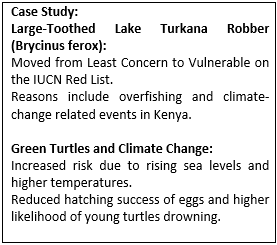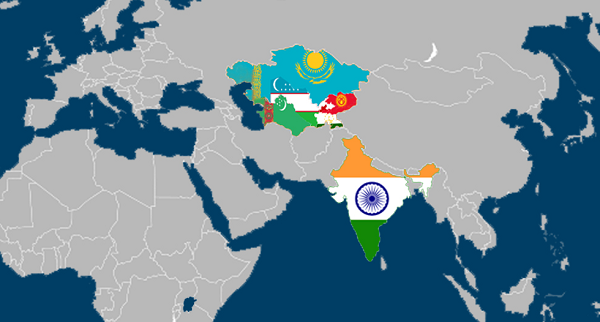- Courses
- GS Full Course 1 Year
- GS Full Course 2 Year
- GS Full Course 3 Year
- GS Full Course Till Selection
- MEP (Mains Enrichment Programme) Data, Facts
- Essay Target – 150+ Marks
- Online Program
- GS Recorded Course
- NCERT- First Ladder
- Polity
- Geography
- Economy
- Ancient, Medieval and Art & Culture AMAC
- Modern India, Post Independence & World History
- Environment
- Governance
- Science & Technology
- International Relations and Internal Security
- Disaster Management
- Ethics
- Current Affairs
- Indian Society and Social Issue
- CSAT
- 5 LAYERED ARJUNA Mentorship
- Public Administration Optional
- ABOUT US
- OUR TOPPERS
- TEST SERIES
- FREE STUDY MATERIAL
- VIDEOS
- CONTACT US
IUCN Updated Red List
IUCN Updated Red List
Context
At the ongoing COP28 UN climate conference in the United Arab Emirates, the International Union for Conservation of Nature (IUCN) has shared a new update on the IUCN Red List. This update is notable for including the first-ever assessment of freshwater fish on a global scale.
Key Findings
Global Species Vulnerability: |
Roughly 44,000 species are currently under the threat of extinction, indicating an increase of 2000 species within the past year. |
Saiga Antelope Status Update: |
The Saiga antelope, a species that has existed since the last Ice Age, has transitioned from the status of Critically Endangered to Near Threatened, signalling positive conservation progress. |
Risk to Freshwater Fish: |
A quarter of freshwater fish species are in danger of extinction, with around 17% directly impacted by climate change. This marks a significant milestone as the assessment represents the inaugural global evaluation of the status of freshwater fish. |
Inclusion of Endangered Freshwater Subterranean Fish Species in Kerala: |
Endangered Species:
Vulnerable Species:
|
About Red List
1. The Red List serves as a crucial barometer for the global biodiversity health check.
2. It provides a comprehensive overview, encompassing details on range, population size, habitat and ecology, use and trade, threats, and conservation strategies for various species.
3. Species are classified into categories in descending order of risk, including Extinct, Extinct in the Wild, Critically Endangered, Endangered, Vulnerable, Near Threatened, Least Concern, and Data Deficient.
Criteria for Red List Assessment:
The Red List utilizes specific benchmarks to gauge species risk, encompassing:
1. Population Size Reduction: Analyzing the overall population decline.
2. Restricted Geographical Range: Evaluating the geographical area a species inhabits and potential threats within that range.
3. Small Population and Decline: Identifying species with a diminishing population.
4. Very Small or Restricted Area: Considering species with a small population or confined to a limited geographical area.
Impact of Climate Change on Freshwater Fish:
1. Affects at least 17% of vulnerable freshwater fish species.
2. Alters seasons, raises sea levels pushing saltwater into rivers, and reduces water levels.
Conclusion
IUCN plays a big part in creating important global agreements like the Ramsar Convention for Wetlands, the Convention on International Trade in Endangered Species, the World Heritage Convention, and the Convention on Biological Diversity.



